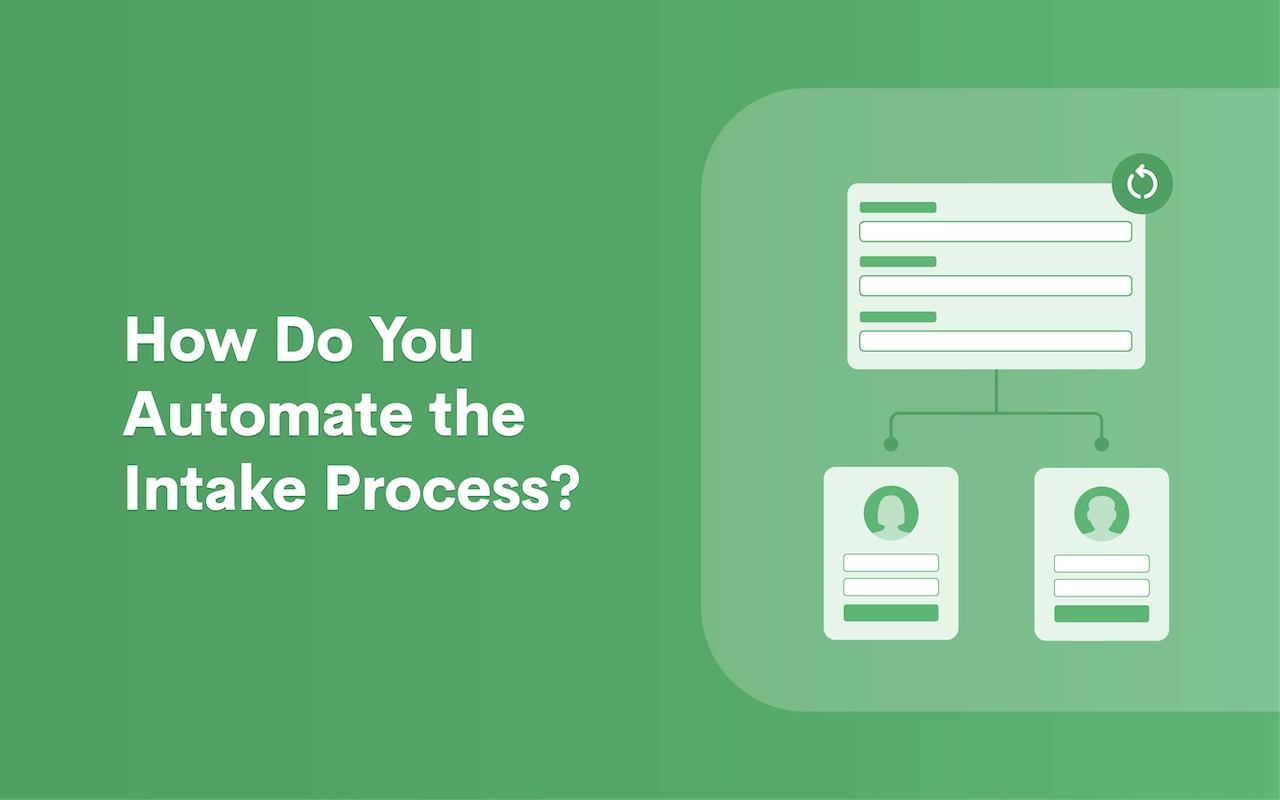How Do You Automate the Intake Process?

Automating the legal client intake process can greatly streamline your workflow, improve efficiency, and allow you to retain more clients. Here are some ways you can automate this critical process:
- Online intake forms: Create online intake forms with dedicated legal practice management software. Customize your forms to gather all necessary client information, such as contact details, case details, and legal documents.
- Document automation: Use document automation software to generate standard legal documents based on the information provided by the client in the intake form to save time drafting routine documents.
- Client portals: Implement a secure client portal where clients can securely upload documents and communicate with your firm to streamline document sharing and communication processes.
- Email automation: Set up automated email responses to acknowledge receipt of the client intake form and provide further instructions or next steps. Email automation tools can be used for this purpose.
- Integration: Integrate your intake forms with your customer relationship management (CRM) and case management software to automatically create client records and populate relevant case information.
- Workflow automation: Utilize workflow automation tools to automate repetitive tasks associated with client intake, such as creating tasks for team members, scheduling appointments, or sending reminders.
- Electronic signature software: Use electronic signature software to obtain signatures on time-sensitive intake forms and engagement agreements remotely.
Legal client intake automation allows firms to customize every aspect of the client intake process, including follow-ups, appointment scheduling, document requests, and more.
What is included in the client intake process?
The client intake process typically includes:
- Initial contact: The client reaches out to the law firm through a phone call, email, website contact form, or in-person visit.
- Pre-screening: The firm performs a basic assessment to determine if the potential client's issue falls within the firm's practice areas and checks for conflicts of interest.
- Initial consultation: The attorney meets with the potential client to gather more information about the client's legal issue, explain the legal process, assess the merits of the case, and discuss fees.
- Client intake form: The client fills out a detailed intake form providing personal information, contact details, and specifics about their legal matter.
- Retainer agreement: The attorney and client enter into an agreement that outlines the terms of representation, scope of services, fees, and payment arrangements, and other relevant terms.
- File and billing setup: A client file is created containing all relevant documents, correspondence, and notes related to the case. Billing arrangements are also set up, which may include retainer payments, hourly rates, flat fees, or other fee structures.
- Communication plan: The attorney and new client agree on a communication plan, including how often they will communicate, preferred methods of communication, and who to contact for updates.
A client relationship management (CRM) system manages the entire client intake process by automating client follow ups, email workflows, appointment scheduling, document creation, and other tasks that would otherwise require time-consuming manual procedures. Using the right tool helps law firms effectively onboard a new client.
How do you develop an intake process for a law firm?
Developing an effective intake process requires careful planning. Firms must determine the primary objectives of the intake process, analyze the needs of target clients, determine the information that you will need to gather during intake, create the forms that will capture the information, and develop the standard operating procedures it will follow.
All the departments in a law firm should take part in customizing the intake process. It is extremely important to create a lawyer intake process that is personalized for the law firm and its practice areas rather than just relying on a generic template. Technology platforms like document automation software, online scheduling tools, and electronic platforms can greatly streamline the process.
How can we improve the intake process?
Firms can improve the intake process by creating a step-by-step flowchart or law firm intake script that maps out intake from initial contact to case closure. This outline should identify key touchpoints and required actions at each stage of the process.
Intake training for law firms provides guidance to staff members who are responsible for handling intake inquiries. It should offer information on how to use intake forms, conduct pre-screening, gather information, and address common client questions.
What is client intake software?
Legal client intake software is a specialized tool designed to streamline and automate the process of onboarding new clients for law firms. It typically includes features and functionalities tailored to the unique needs of legal intake.
While free client intake software for law firms might seem like a good option for small firms, it often comes with limited features and functionalities compared to paid solutions. Free intake software might also lack the capability to scale with the growth of your firm, may offer limited or not customer support, and lack the robust security measures found in paid solutions.
Automate your client intake with Lawmatics
Lawmatics makes it easy to create your own intake process and efficiently capture the client information you need. By establishing a clear and consistent process for client intake, you can save time, eliminate troublesome errors, and keep everyone in your law firm on the same page. Are you ready to learn more? Request your free demo today.


